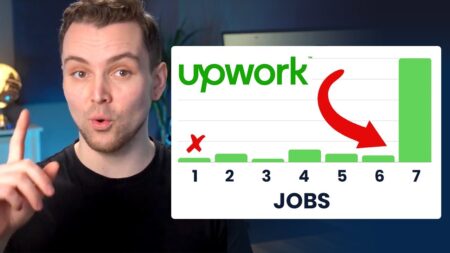We all want to retire at some point, and if you play your cards right, you’ll reach retirement age with a sizable nest egg. You can then hang up your work jeans and ride off into the sunset very comfortably.
But truthfully, retirement is a tricky subject for freelancers. If you’re self-employed, you’re automatically disadvantaged, without an employer to match your pension fund. You might not even have a steady income to make those contributions to begin with.
However, that doesn’t make a self employed retirement plan impossible for freelancers. It just means that, as with everything else in your career, you need to be more independent when planning for your future.

Get Weekly Freelance Gigs via Email
Enter your freelancing address and we'll send you a FREE curated list of freelance jobs in your top category every week.
Understanding self employed retirement plans
A retirement plan is a financial product or arrangement that covers your expenses when you’re no longer participating in the workforce.
The amount you receive is dependent on how much you’ve saved throughout the years. That means, a self employed retirement plan is catered to individuals who freelance or own their own business.
Self employed retirement plans vs. Typical retirement plans
The biggest difference between a typical retirement plan and a self employed retirement plan is the employer-employee relationship. Your employer is you, which puts the burden of growing your retirement fund entirely on your shoulders.
A recent study highlighted that lack of access to traditional workplace benefits, including a retirement plan, is apparent among independent workers. This is why self employed individuals are ‘two-thirds less likely than traditional workers to have a retirement plan,’ according to government data.
And it’s true. The most common retirement plan options are either employer-sponsored or offered as a work benefit. For example, more than 58 million American workers had access to a 401(k) in 2018.
The company you work for often sets up this particular account. They then ‘match’ a portion of your personal contributions. This is why it’s often referred to as ‘free money’.
That handout is not available to freelancers simply because they’re not employed in a traditional sense. However, it’s not all bad news! The main benefits of setting up a self employed retirement plan is that they come with more investment choices than typical plans.
Self employed retirement plans also have higher contribution limits. Say you’re having a very profitable year — you can continue to put in the cash without worrying about contribution limits. To sum up:
Pros: Higher contribution limits, More investment options
Cons: No company matching, Requires more research and administrative work
When to start thinking about your retirement plan
The short answer is: as soon as possible. Saving for retirement is a lifelong process — you can’t build a future overnight.
In reality, however, many Americans don’t begin saving in their 20s — the age that financial experts recommend — but rather much later in life.
It’s advisable to start saving 10% of your income as soon as you’re earning. This is because some retirement plans earn interest on interest, or compound interest. And if you start putting away cash early on, your contributions have more time to compound. The end result is a higher interest on top of your savings.
Of course, this is easier said than done for freelancers due to irregular paychecks. The main goal should be that you’re allocating a portion of your monthly earnings to your self employed retirement plan, no matter how big or small.
Furthermore, you can also learn more about how to run a profitable freelance business. This way, you can ensure that you’re not risking your current financial health as well as your future.

Different types of self employed retirement plans
Now that you know how important a self employed retirement plan is, it’s time to pick the right one for you. Let’s break them down into two main types:
1. Individual Retirement Account
As its name suggests, an individual retirement account (IRA) is a retirement plan that almost anyone can set up. It’s similar to other retirement accounts, in that your contributions grow over time, and you can withdraw them once you’re eligible. However, there are some key differences to note among these four types:
a. Traditional IRA
A traditional IRA allows you to make contributions pre-tax, which grows in your account tax-deferred. That makes it an extremely attractive option for individuals who think they will have lower taxes in the future compared to the present. The disadvantage is that your future withdrawals will be taxed depending on your tax rate then.
b. Roth IRA
The tax advantages on a Roth IRA are different. Taxes are already deducted from your contributions, and your future withdrawals are completely tax-free. If you think your taxes in the future will be a lot higher than they are today, then this is the better plan for you.

c. Simplified Employee Pension (SEP)
A SEP IRA is similar to a traditional IRA in terms of tax advantages. The main difference is that it also caters to small businesses. That means it can be set up by an employer, who can also be you. It also has a higher contribution limit than the first two options.
d. Savings Incentive Match Plan for Employees (SIMPLE) IRA
SIMPLE IRA bears a lot of similarities with a traditional IRA tax-wise, but also with employer-sponsored retirement plans. Employers are required to match up to 3% of the employee’s salary or make fixed contributions of 2%. Since you’re self employed, you’re required to make contributions regularly.
2. Solo 401(k)
The Solo 401(k) works in the same way as an employer-sponsored 401(k). The IRS states that you can contribute to it in two ways: through elective deferrals or employer non-elective contributions. That simply means that you can contribute your ‘earned income’ provided that it doesn’t go over the limit — or, up to 25% of your compensation.
First steps to creating a self employed retirement plan
Contrary to what you might think, setting up a self employed retirement plan is actually not that difficult. All of these plans can be accessed through a financial institution that you trust.
It’s highly likely that your current provider can offer advice on self-employed retirement plans and help you open an account, too. You can even set up an account online, specifically for the SEP IRA.

However, we recommend consulting with professionals who can help you compute how much you need for retirement. That can help you determine the best account (and overall plan) for you.
Retirement can be intimidating especially for freelancers who have less financial security. But with the right self employed retirement plan, it doesn’t have to be. Any type of IRA or a Solo 401(k) is not too difficult to set up.
All you need is to figure out your long-term goals and file some paperwork. Once you get over those first steps, you can start working towards a bright future.
Keep the conversation going...
Over 10,000 of us are having daily conversations over in our free Facebook group and we'd love to see you there. Join us!



